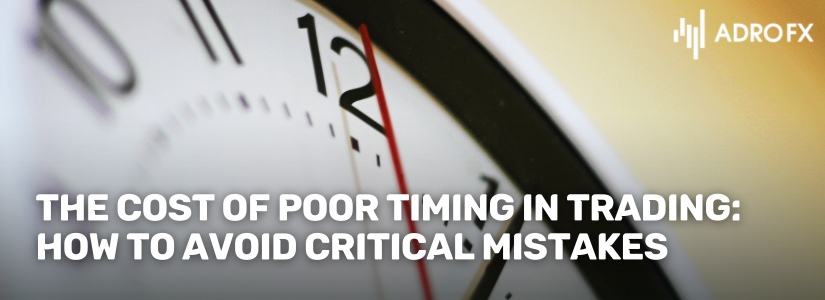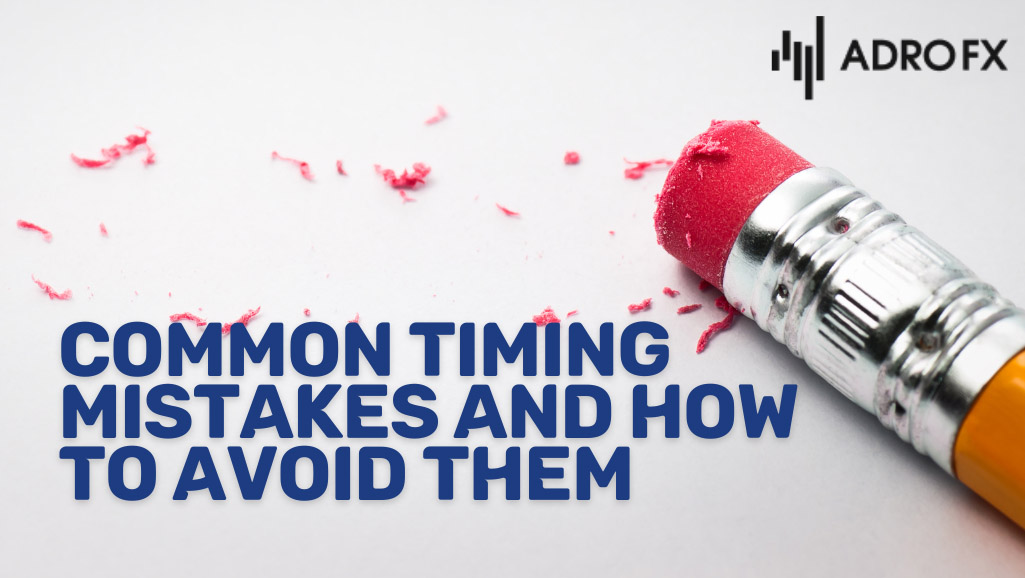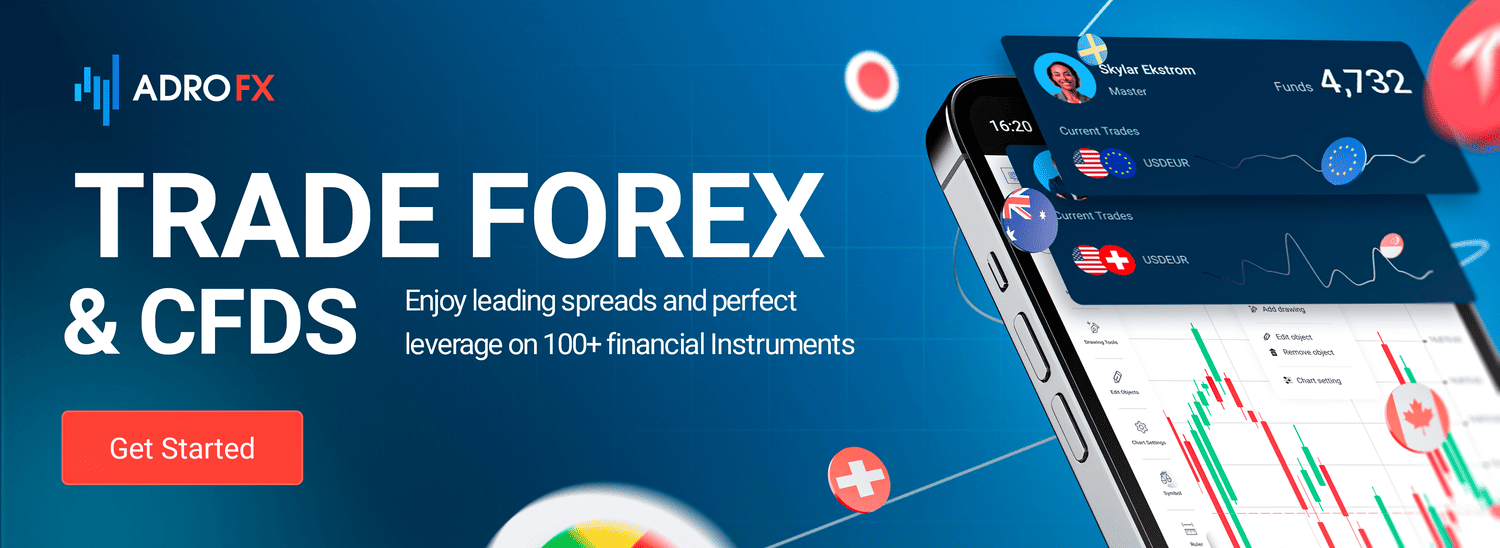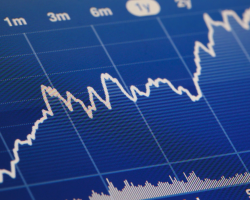The Cost of Poor Timing in Trading: How to Avoid Critical Mistakes

Did you know that poor timing is one of the most common reasons traders fail? In fact, even seasoned traders often struggle with timing their entries and exits, which can lead to significant losses. Timing in trading isn't just about picking the right moment to buy or sell; it’s about understanding the market's ebb and flow, responding to signals at the right time, and avoiding impulsive decisions that can harm your portfolio.
When your timing is off, you risk missing profitable opportunities or even locking in unnecessary losses. A wrong entry or exit point can cost you more than just money - it can also impact your overall trading strategy and long-term success.
In this article, we’ll explore how poor timing affects your trading outcomes, share real-life examples of what poor timing looks like, and offer strategies to help you avoid making these costly mistakes. Whether you're new to trading or a seasoned pro, mastering the timing of your trades is essential to achieving consistent success.
What Constitutes Poor Timing in Trading?
Poor timing in trading can manifest in many ways, but it usually boils down to entering or exiting a trade at the wrong moment. Let’s break down a few common scenarios where timing issues arise.
Entering Too Early
One of the most common mistakes is entering a trade too soon, before the market has truly confirmed a trend. Traders may get excited by early signals, like a slight price movement or a rumor, and jump in too quickly. This rush can lead to entering positions before a market shift is fully established, resulting in losses when the trend reverses or fails to materialize.
Entering Too Late
On the flip side, entering a trade too late is also a major timing mistake. In this case, traders may wait too long for a confirmation, only to miss out on the best price. By the time they enter, the market may have already moved significantly in one direction, limiting potential profits or even turning the trade into a loss.
Exiting Too Early or Too Late
Poor timing doesn’t just apply to entry points. Exiting a trade too early can prevent traders from capturing full profits, while holding onto a trade for too long can lead to missed opportunities or unnecessary losses. Many traders panic and sell too quickly when a trade turns against them, or they become overly confident and hold on, hoping the market will reverse in their favor.
Chasing the Market
Another poor timing mistake is chasing the market. This happens when traders jump into a trend because they fear missing out, often after a major price movement. Chasing can lead to buying at peak prices or selling at the lowest point, leaving traders at a disadvantage.
In the next sections, we’ll discuss how you can identify poor timing in your trades and offer strategies to improve your decision-making to avoid these common pitfalls.
Also read: From Pitfalls to Profits: Learning from the Mistakes of Forex Traders

The Impact of Poor Timing on Your Trading Portfolio
Poor timing in trading can have a profound effect on your trading portfolio, often leading to immediate financial losses and missed opportunities that can compound over time. The consequences of poor timing extend beyond just one bad trade; they can affect your overall strategy, erode your confidence, and disrupt long-term profitability.
Financial Losses
At the core of poor timing lies the potential for significant trading losses. For instance, entering a trade too early or too late can result in buying at inflated prices or selling at a loss. This can quickly add up, especially in volatile markets where price fluctuations happen rapidly. If poor timing is a recurring issue, these losses can quickly add up, leading to a detrimental impact on your portfolio's overall performance.
Missed Opportunities
On the flip side, poor timing can also mean missing out on profitable opportunities. When you fail to enter a trade at the optimal moment, you may watch as the market moves in the direction you were hoping for, but without you in the position to benefit. This is particularly frustrating when you’re watching a market trend take off and realize that the best entry point has already passed you by. Missed opportunities like this can lead to frustration and hesitation in future trades.
Long-Term Portfolio Damage
Over time, poor timing can have a cumulative negative effect on your trading portfolio. If you're consistently making ill-timed trades, your risk-reward balance may tip unfavorably, which could hinder your ability to generate consistent returns. Eventually, this can limit your portfolio's ability to recover or grow, especially if large, poorly timed trades erode your capital.
How to Improve Timing in Your Trades
Improving your timing in trading isn’t about guessing the market’s next move - it’s about employing sound strategies and techniques that enhance your decision-making process and help you act when the market conditions are right. Here are a few strategies to help you improve your trading timing:
Use Technical Analysis to Identify Key Entry and Exit Points
Technical analysis is one of the most effective ways to improve timing. By studying price charts, support and resistance levels, and technical indicators such as moving averages, RSI (Relative Strength Index), and MACD (Moving Average Convergence Divergence), you can pinpoint more precise entry and exit points. These tools help you better understand price trends and reversals, enabling you to time your trades more effectively.
Understand Market Trends
Understanding market trends is key to making timely decisions. Whether you're trading stocks, forex, or commodities, knowing whether the market is in an uptrend, downtrend, or range-bound helps you enter and exit positions at the right time. Follow economic indicators, news, and sentiment analysis to gauge where the market is headed, ensuring you make informed decisions based on market conditions rather than emotional reactions.
Practice Patience and Discipline
One of the most critical elements of improving your timing is practicing patience. Sometimes, the best decision is to wait for the right opportunity rather than jumping in too early or too late. By developing discipline, you can avoid impulsive decisions that lead to poor timing. Stick to your trading plan, and only execute trades when the conditions align with your strategy.
Utilize Trading Strategies
Incorporating tested trading strategies can help refine your timing. Strategies such as trend-following, breakout trading, or reversal trading all rely on waiting for the right signals before acting. Understanding when and how to implement these strategies ensures you're not chasing the market or entering at the wrong time.
Leverage Tools and Resources
Many tools and resources are available to help improve your timing. Trading platforms often offer advanced charting tools, risk management features, and backtesting capabilities to test your strategies and improve decision-making. Additionally, demo accounts allow you to practice without risking real capital, giving you the chance to refine your timing in a risk-free environment.
By combining these approaches, you can significantly improve your timing and, in turn, your overall trading success. Whether you are a beginner or an experienced trader, using a disciplined, data-driven approach will help you avoid poor timing and make more profitable decisions in the long run.
Also read: The Risks and Consequences of Trading Forex Without a Strategy: Why a Plan is Essential for Success

Common Timing Mistakes and How to Avoid Them
Timing mistakes are a common pitfall for traders of all levels, and they can seriously damage a trading portfolio. Understanding and identifying these errors is crucial to becoming a more effective trader. Here are some of the most common timing mistakes and advice on how to avoid them:
Chasing the Market
One of the most frequent timing mistakes is chasing the market. This occurs when a trader jumps into a trade because they fear missing out (FOMO) on a potential profit. Typically, traders chase the market after a strong price movement has already occurred. The problem with this is that the best price may already have passed, leaving the trader to buy in at a higher price or sell at a lower price.
Discipline is the key here. Traders must avoid acting impulsively and stick to their plan. Instead of chasing the market, focus on waiting for a favorable entry signal that aligns with your strategy. For instance, use tools like trendlines, moving averages, and RSI (Relative Strength Index) to confirm that the market is still moving in your favor.
Not Waiting for Confirmation
Many traders make the mistake of entering a trade too early, thinking they have identified a trend or reversal before it has fully developed. Without waiting for confirmation, such as a price breakout above resistance or a clear trend pattern, traders risk entering positions that quickly turn against them.
Patience is critical here. Always wait for a clear confirmation before entering a trade. Whether it’s a price action pattern or a technical indicator, ensure that the trade has sufficient evidence to support your decision. Avoid jumping in too early, even if the market appears to be moving in your direction.
Overtrading
Another mistake is overtrading, which often results from a desire to stay active in the market. Traders might make multiple trades in a short period, seeking to capitalize on every movement, but this often leads to poor timing and unnecessary risk.
Overtrading can be avoided by focusing on quality over quantity. Stick to your trading strategy and avoid the temptation to act on every market movement. Establish a set number of trades per week or month, based on your analysis, rather than trying to trade constantly.
The Role of Emotional Control in Timing
Emotions are a significant factor in poor timing decisions, and managing them effectively is essential for consistent success. Fear and greed are the two main emotional drivers that often lead to poor timing decisions in trading.
Fear of missing out or fear of losses can cause traders to enter or exit trades prematurely. For instance, a trader might sell too early because they are afraid the market will turn against them, or they might hesitate to enter a trade out of fear of making a mistake.
On the flip side, greed can lead to holding onto a position for too long, hoping for even higher profits, despite signs that the market is turning. This desire for excessive gains can cloud judgment, resulting in poor timing when it’s time to exit.
How to Control Emotions
- Develop a Trading Plan
A well-defined plan can help you stay disciplined and avoid emotional decisions. Stick to your plan even when you feel fear or greed creeping in. - Practice Mindfulness
Stay aware of your emotions throughout the trading process. If you feel emotional, it’s a sign to step back and reassess rather than impulsively acting. - Take Breaks
If emotions start to take over, take a break from the market. Stepping away for a while can help you regain a clear and calm perspective.
Also read: Tailored Investments: Leveraging Your Risk Tolerance for Optimal Return
Conclusion
Good timing is fundamental to trading success. Whether you’re avoiding chasing the market, waiting for confirmation, or controlling your emotions, mastering timing can make the difference between profitable trades and costly mistakes. By incorporating the strategies discussed in this article, you can improve your timing and significantly enhance your trading performance.
The path to trading success is not about acting impulsively but about acting at the right moment with the right information. By practicing patience, applying technical analysis, and managing your emotions, you can take control of your trading outcomes and build a more reliable, consistent strategy.
About AdroFx
Established in 2018, AdroFx is known for its high technology and its ability to deliver high-quality brokerage services in more than 200 countries around the world. AdroFx makes every effort to keep its customers satisfied and to meet all the trading needs of any trader. With the five types of trading accounts, we have all it takes to fit any traders` needs and styles. The company provides access to 115+ trading instruments, including currencies, metals, stocks, and cryptocurrencies, which make it possible to make the most out of trading on the financial markets. Considering all the above, AdroFx is the perfect variant for anyone who doesn't settle for less than the best.









